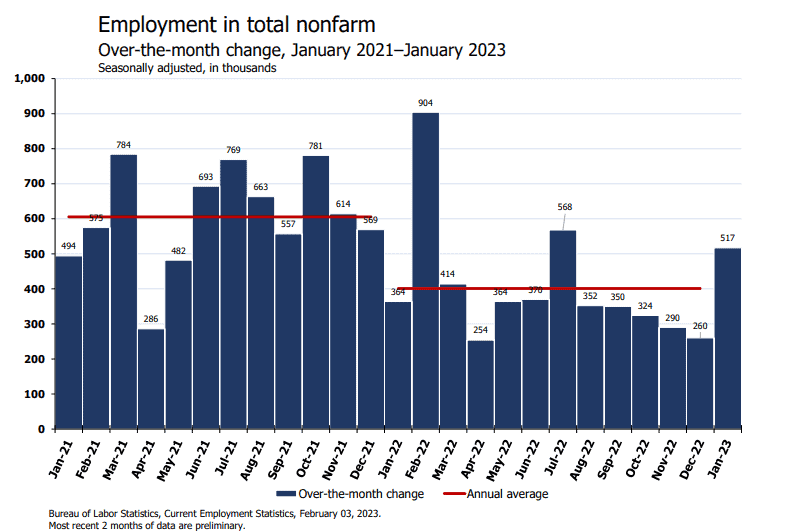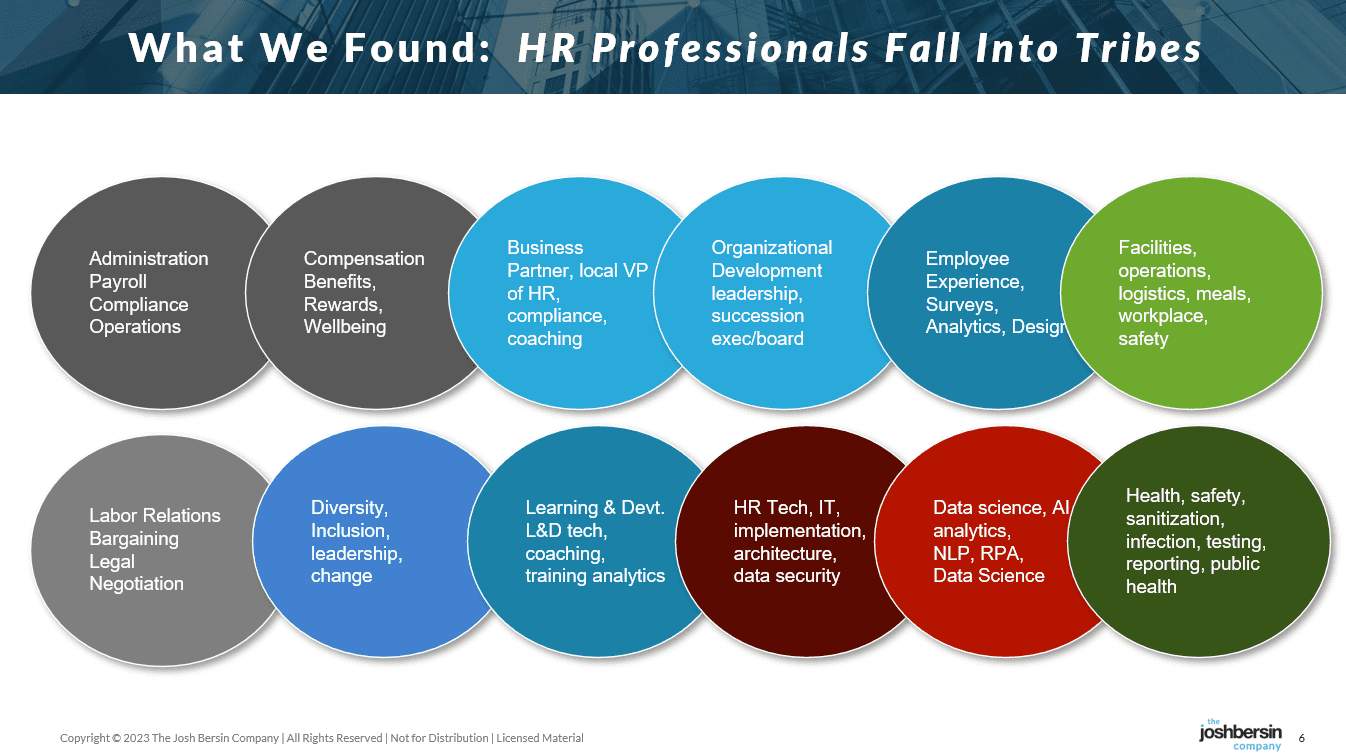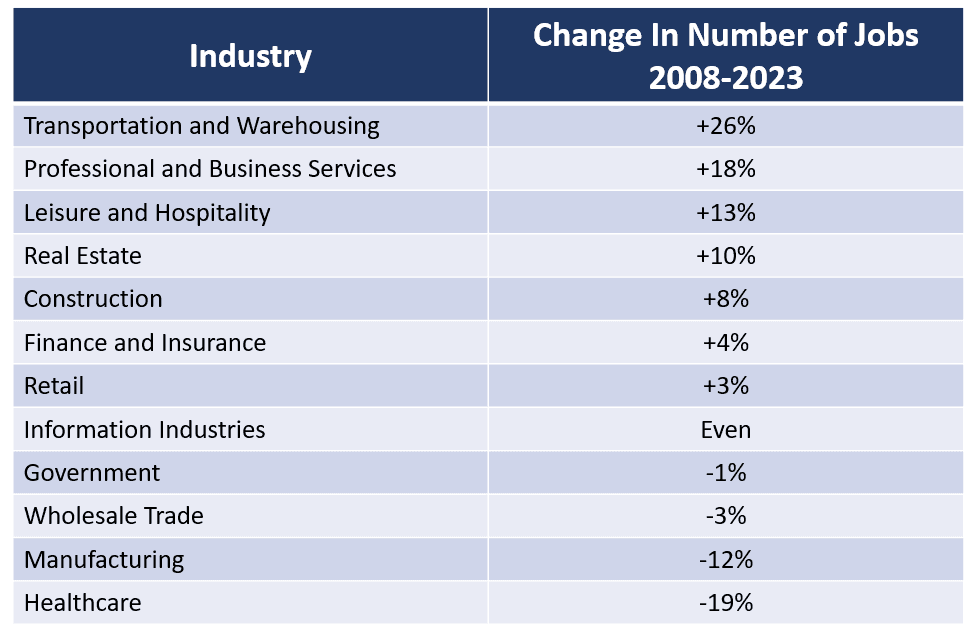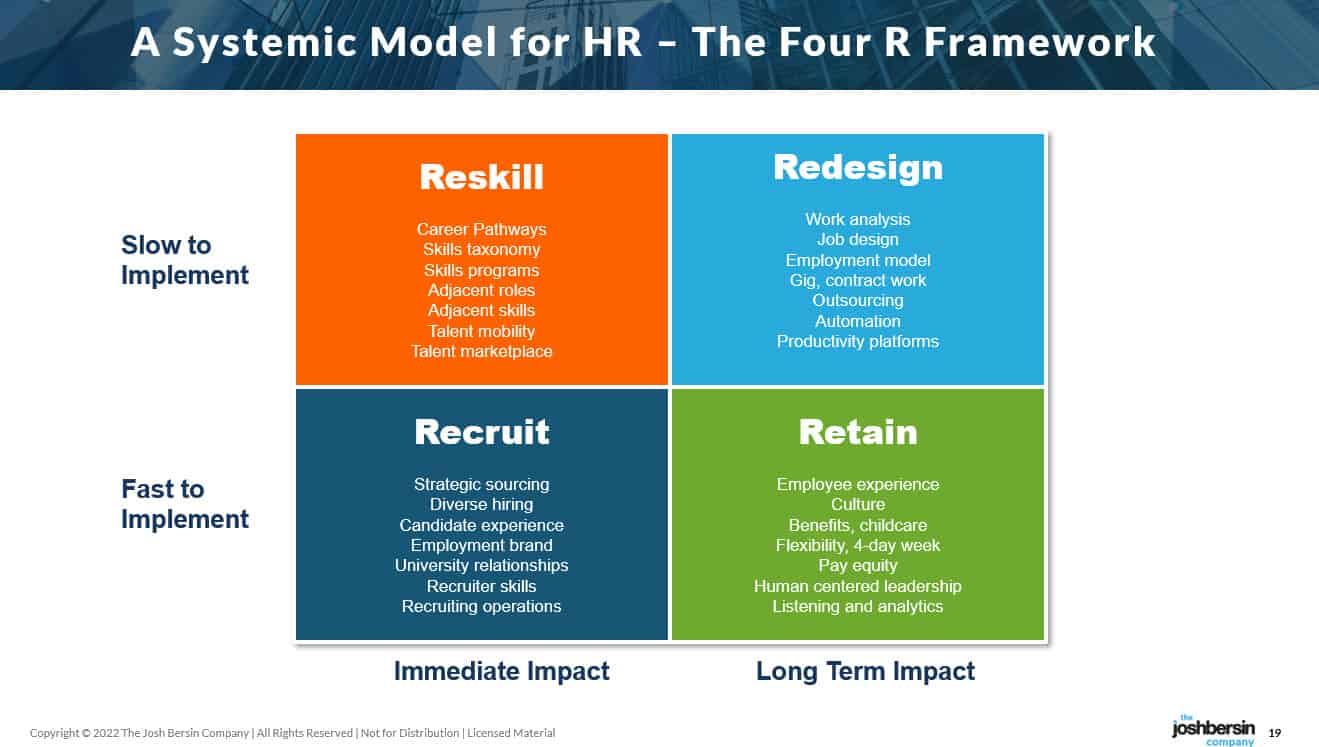The Churning US Labor Market… And Why We Need “Labor Anthropologists.”
While I’m not formally trained as an economist, I spend so much time with companies HR departments I feel like we are “micro-economics” experts. So in a confusing time of paradoxical data (low unemployment during growing layoffs), let me explain what’s happening.
The US Labor Market Is A Churning Engine
While it’s tempting to think of the labor market as an entity, it’s really a highly dynamic environment. So whenever we see broad statistics on the surface, we have to remember that under the covers there are lot of “paddling little duck feet” moving around all the time.
For example, one may think that the hyper-low unemployment rate (3.4%) means that everyone has a job. Quite the opposite is true. According to the BLS, as well as data from Pew Research and the Fed, upwards of 30% or more US workers change jobs each year. About 30% change voluntarily (the extremely high “quit rate”) and another 10% quit because of layoffs, retirement, or performance-based firing.
Think about this for a minute. In an economy of 160.1 million workers, that means almost 56 million people are looking for jobs, changing jobs, and restarting work each year. This level of “mobility” is about as high as I’ve ever seen it, and it’s facilitated by the pandemic reopening and the massive change in our industries. (For companies selling recruiting services, this is a bonanza.)
Second, there is a massive amount of “new job creation” (and also “old job destruction”) going on. Last year the US created an average of 401,000 jobs per month and in January we create 517,000. That’s an annual “new job creation rate” of around 4.5%, which means this “labor market” is replacing itself just about every 20 years. One can see that this job creation is slowing, but that’s only because much of the higher job creation was recovery from the pandemic.
 |
Third, while the BLS tracks hiring, quitting, and layoffs, it does NOT keep track of “job redefinitions” or companies that change the title, nature, or roles of a job. Our Global Workforce Intelligence Research, which we conduct from a massive data set hosted by Eightfold, shows that as many as one fifth of US jobs are “redefined” in some industries each year. And this alone is massive. (More on this below.)
When Chevron decides to expand its natural gas or chemicals business, or Ford expands the F150 Lightning manufacturing line, or Walmart expands its pharmacy business it creates “new positions” and “new roles” without necessarily posting a job opening. The government doesn’t see this data, but we do. And this internal “churning” has accelerated.
And despite the 200,000+ layoffs in the tech and services industry in the last two months, almost every company is rethinking its jobs around the innovations of AI.
In my domain, the HR Profession in general, there is a striking decline in HR payroll, generalists, and administrative roles while demand for training specialists, recruiters, analysts, DEI experts, and technology specialists are skyrocketing. In fact many of the traditional roles in “talent management” are in hot demand again, as are lots of new jobs as data scientists (people analytics specialists), compensation specialists (very rapidly changing area), and HR consultants who understand employee listening, employee experience, and HR service delivery operations.
And that leads me to my second big topic about this churn: how do you understand this “changing anthropology” of your company?
Understanding The Anthropology Of Your Company
The labor market, your company, and your profession is more like an “anthropology” than a “market.” It evolves and changes, and you should try to understand it.
The word “anthropology” means “the study of human biological and physiological characteristics and their evolution.” And that, to me, is how we should look at the labor market.
Let me give you a glimpse into a project we call “The Anthropology of Human Resources,” the profession we serve.
When we looked at job data about the 20+ million HR professionals in the world, we found hundreds of job titles. So to make sense of them we clustered them into “skills groups” to see what people are really doing. (Lightcast has been our partner in this.) And here is what we found: regardless of title, HR professionals fall into “Tribes.”
 |
Most of you will recognize these “tribes” – they make up the science, functional, and professional domains within HR. But they’re even more interesting than this. They tend to cluster around the educational, related-skills, and common interests of people. People who like to “teach” for example, rarely end up as compensation managers. People who like to “analyze” rarely end up as trainers, business partners, or consultants).
What this analysis show us is how the “Tribes” are evolving, changing, and either growing or shrinking. One interesting analysis we did, for example, was to look at the adjacencies of these tribes in a two dimensional format. So here is the “map” of these tribes to see “who is closest to whom.” (Note the size of these geographies represents the number of different varied skills, not the population size.)
 |
We can see how people can “migrate” (to use the anthropology term) from tribe to tribe, place to place. And this helps us with our Global HR Capability Project, our benchmarking of HR organizations, and many of the programs in our Josh Bersin Academy we build for various HR topics and roles.
What Does Anthropology Tell Us About The Labor Market
Ok why do I digress in this direction? My main point is that headlines about “the number of jobs created” or “the unemployment rate” don’t tell the whole story. The real action in the labor market is happening under the surface.
At a national level, we are seeing a steady growth in jobs in healthcare, hospitality, service, and financial industries. Jobs in construction, manufacturing and engineering are expected to almost double because of the Inflation Protection Act and infrastructure investments. And jobs in sales, management, and marketing continue to grow.
At the same time this is happening, given the flat to shrinking labor pool, many front-line labor jobs are going under filled.
Here, for example, is the analysis of jobs by industry, comparing October 2008 (pre-recession) to December 2022 (today’s labor market). It’s surprising.
 |
While the total labor market grew, the total number of filled positions changed in a confusing way. We have fewer healthcare and manufacturing jobs than we did fifteen years ago, despite the tremendous growth in these areas. These industries are suffering from retirements and people just exiting the profession, causing an increasing shortage of workers. And that means these companies are redesigning jobs, automating tasks, and changing roles as fast as they can. (Read more about it here.)
And as these changes take place, anthropology (and skills-adjancies) explain the future. People who studied math or science, for example, may work as engineers or analysts. But over time as jobs change they may move into CyberSecurity, AI, marketing analytics, financial analysis, or even People Analytics. People who have social and people management skills may work in the public sector or they may even drive a bus. They often move into jobs in customer service, sales, or possibly even healthcare. And this is why we are so enthusiastic about Capability Academies, since they help you fill these gaps.
The healthcare industry, one of the most complex and labor-constrained part of our economy, is getting very good at building Career Pathways. These are multi-year paths to take someone from “Tribe A” to “Tribe B.” Companies like Providence, Mercy Health, and even Walmart are now formally educating and training people to move from lower-skilled jobs to high-demand roles (ie. nursing, pharmacy tech, clinical staff) with the help of vendors like Guild Education. These investments pay off handsomely because in-demand roles are often expensive or almost impossible to fill at scale.
Consider yourself a “Labor Anthropologist.”
Jobs On The Rise: New Titles Being Created
Here’s another example of how dynamic this has become. LinkedIn just released it’s “25 Jobs on the Rise” organized by job title, and many of these are new.
- Head of Revenue Operations (sales operations)
- HR Analytics Manager (People analytics or HR analyst)
- Diversity and Inclusion Manager (DEI)
- Truck Driver
- Employee Experience Manager (A job title that did not exist five years ago)
- Sales Enablement Specialist (Another new job that’s only a few years old)
- Physician Assistant or Nurse Specialist (A new role designed to make docs and nurses more efficient)
- Growth Marketing Manager (A new role that combines marketing and sales)
- Data Governance Manager (A new role that I don’t remember in my past)
- Grants Management Specialist (Needed for all the new government spending)
- Molecular Technologist (Highly technical lab testing, also new)
- Content Designer (aren’t we all doing this now?)
- Sustainability Analyst (very new and growing fast)
- Strategy and Ops Manager (used to be called COO but now includes strategy)
- Chief People Officer (we know why this is on the list).
As I look through the top 25 I am struck that about half of them are “new job titles.” In other words, you may not fully recognize them because they’ve been “invented” in the last 3-4 years.
And if this doesn’t give you a sense of the churn, let me add one more piece of evidence. Lightcast, the largest public data provider of jobs and skills data (merger of EMSI and Burning-Glass) has a page on its website where it shows all the “new skills” and “changed skills” taking place each week. It’s fairly staggering to look at.
Lightcast’s multi-year research shows that 80% of the top skills required for each job have changed since 2016 (only seven years). While PowerSkills (communications, time management, leadership) have been important for decades, the highly differentiating skills keep changing. (The study found that about 15% of jobs remain fairly static.)
What Does This Mean To You
I’m sure you understand my point: the labor market is far more complicated than a simple unemployment rate can explain. For you as a leader, HR professional, or manager, this means one thing: you have to develop a new skill yourself: understanding and designing the jobs for today.
And I don’t mean “jobs for the future” I mean jobs for now! If you look at the new business areas, technologies, and systems in companies today (AI is only one part of this), you must recognize that any job description or role you created five years ago could be 50% obsolete. And if you try to “hire your way to competence” by looking for these people in the open market, you may not find them.
We see two big solutions to this going forward.
First, companies should invest in Talent Intelligence (read our Primer here) to understand the trending skills, jobs, and roles within your company, your industry, and the labor market. Our Global Workforce Intelligence research found that the “Pacesetter” companies in healthcare and banking have very different skill sets than the followers or laggards. If you don’t know what these skills are you cannot train or hire to fill these gaps.
Second, HR departments must learn to practice what we call “Systemic HR.” In other words, every new hire or reorganization or change to goals or metrics should be done with “future productivity design” in mind. We call this the “Four R’s: Recruit, Retain, Reskill, Redesign.” All four of these HR practices need to be going on in an integrated way.
 |
All the Pacesetter companies we identified are doing this today, albeit at various levels or maturity.
Bottom Line: Don’t Let The Economic Data Fool You
While we all have to pay attention to the economy as a whole, each company is a “micro-economy” in its own right. Your business, product, technology, and marketing strategy defines the jobs, roles, and skills you need. In this new era of scarce talent and worker shortages, it’s time to “get under the covers” and understand your labor market in detail. This kind of anthropology will help you grow, save you from layoffs, and prepare you for growth ahead.
(PS. Our corporate membership program and The Josh Bersin Academy are designed to help you do this.)
Additional Resources
Labor Shortage In The Middle Of A Business Slowdown? It All Makes Sense.
Were All These Layoffs Inevitable? Perhaps, But Here’s How It Happened.
Predictions for 2023: Redefining Work, The Workforce, And HR


